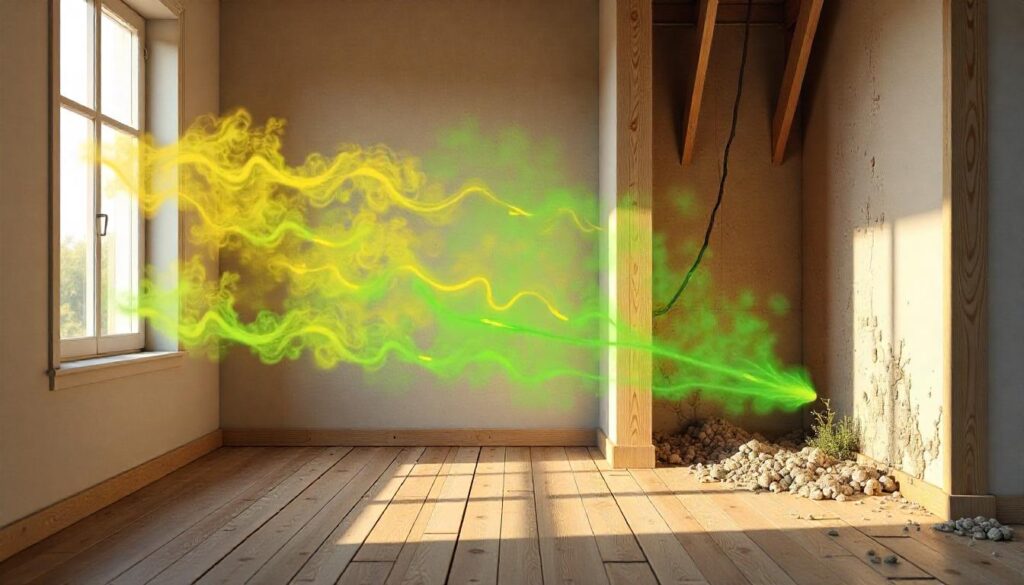Introduction
The Mystery of the Cat Pee Smell—Without the Cat
You walk into a room and wrinkle your nose. That sharp, acrid odor hits you—eerily familiar, unmistakably pungent. It smells like cat urine… but there’s just one problem: you don’t own a cat. No stray pets. No accidents. Just that persistent, unsettling stench.
So what’s going on?
This scenario is more common than you’d think. Homeowners across the country have reported the same baffling issue—a house that reeks of cat pee for no apparent reason. It turns out, the culprit might not be feline at all. In many cases, the real intruder is mold.
Why It Matters
That strange smell isn’t just annoying—it could be the warning sign of a much bigger problem. Mold, especially the toxic variety known as black mold, can pose serious health risks, from allergic reactions to chronic respiratory conditions. It can also damage your home’s structure, silently creeping through damp spaces and hidden walls. Understanding this odor—and what causes it—is your first line of defense against both invisible toxins and costly repairs.

The Surprising Connection Between Mold and Cat Urine
So, why does mold sometimes smell like cat pee? The answer lies in a group of sneaky little chemicals called microbial volatile organic compounds, or MVOCs. These are gaseous byproducts released by mold as it grows and feeds on organic materials like drywall, wood, or insulation. While MVOCs vary widely in scent—some earthy, some musty—a few carry a distinctly ammonia-like edge.
One of the biggest offenders? Stachybotrys chartarum, commonly known as black mold. This species doesn’t just thrive in moist, hidden environments—it also produces MVOCs that mimic the nose-stinging scent of cat urine. The stronger the mold growth, the more intense the smell. So if your home reeks like a litter box gone rogue, and no cats are in sight, mold may very well be your unwanted guest.
Where This Smell Creeps In
That ammonia-like odor isn’t just floating in from nowhere—it’s coming from somewhere dark, damp, and often ignored. Mold thrives in environments where moisture lingers and airflow is poor, making certain areas of your home prime targets.
Common Hideouts Include:
- Basements and crawl spaces: Cool, dark, and often poorly ventilated.
- Attics: Especially if there’s roof leakage or poor insulation.
- Behind walls and under floors: Particularly after plumbing issues or flooding.
When Does It Strike?
- After rainstorms or in climates with high humidity.
- Following leaks in pipes, roofs, or HVAC systems.
- During seasonal humidity spikes—think summer or after snowmelt.
Here’s the kicker: you don’t have to see mold for it to be there. Many strains flourish out of sight, releasing their telltale stench long before a visible colony appears. That’s why smell is often your first and only warning sign.
Mold vs. Actual Cat Pee: How to Tell the Difference
So how do you know whether you’re sniffing out a mold problem or just looking for a phantom feline? Let’s break it down:
| Feature | Cat Urine | Mold (esp. Black Mold) |
| Odor Profile | Sharp, ammonia-like, often localized | Musty, sometimes ammonia-like, widespread |
| Typical Locations | Floors, carpets, corners, near litter boxes | Walls, crawl spaces, basements, ceilings |
| Visual Signs | Wet spots, stains, discoloration | Black/green patches, bubbling paint, damp drywall |
| Health Implications | Mild irritation, lingering smell | Allergies, asthma, respiratory distress |
If the smell lingers despite deep cleaning and there’s no sign of pet activity, it’s time to consider the invisible: mold may be the one making your house stink—and making you sick.

Why This Isn’t Just a Nuisance Smell
Sure, the scent is unpleasant—but the stakes go far beyond your nose. That “cat pee” smell could be a red flag waving at a much bigger problem: toxic mold exposure.
Health Risks Include:
- Allergic reactions: Sneezing, coughing, skin irritation.
- Respiratory issues: Mold spores can inflame lungs and trigger asthma attacks.
- Neurological symptoms: In severe cases, long-term exposure—especially to black mold—has been linked to memory loss, fatigue, and headaches.
Black Mold: The Real Villain
Stachybotrys chartarum isn’t just foul-smelling; it produces mycotoxins that can be dangerous with prolonged exposure.
Children and pets are particularly vulnerable due to their smaller size and developing respiratory systems. That makes early detection and swift action more than just practical—it’s critical.
What to Do If You Smell It
Got that sharp whiff of something suspicious? Here’s how to act fast—and smart.
Start With These Inspection Tips:
- Sniff strategically: Check damp zones—basements, behind appliances, under sinks.
- Look for subtle clues: Warped walls, bubbling paint, or unexplained moisture.
- Use a flashlight and your nose—mold hides in shadowy corners.
When to Call the Pros:
- If the smell persists despite cleaning.
- If visible mold covers more than 10 square feet.
- If anyone in the house has symptoms that worsen indoors.
Don’t Wait It Out
Mold doesn’t go away on its own—it spreads. Fast action can prevent deeper damage to your home and your health. Call in certified mold remediation experts who can test air quality, identify the source, and safely remove the problem.
Ignoring the smell might save you a phone call today—but it could cost you a fortune tomorrow.
Final Thoughts: Sniffing Out the Truth
If your home smells like cat pee and there’s no feline prowling around, don’t dismiss it as a fluke. That pungent, ammonia-like odor could be mold waving its invisible flag, especially in moisture-prone or poorly ventilated spaces.
The key takeaway? Mold doesn’t always show its face—but it almost always shows its scent. Trust your nose. When something smells off, investigate. For the sake of your home, your health, and everyone living under your roof, being proactive is more than responsible—it’s essential.